
The successful artists of the Renaissance period were not sole practitioners. They organised workshops or studios of assistants and apprentices to maximise their output. They re-used images and individual figures time and time again to meet demand. In short the successful artist was a business man; as much a successful entrepreneur as an artist. The extent of the artist as entrepreneur is very clear in the current exhibition of works by and after Sandro Botticelli, ‘Botticelli Reimagined’, now showing at the V&A.
The exhibition is both a collection of works by Botticelli and his workshop, and an exploration of the re-discovery of his work in the C19 and the emergence of key images by him as icons of love, sex, Venus and Renaissance beauty in contemporary art. The greatest joy of the exhibition is the sheer number of works by Botticelli and his workshop that the V&A have been able to borrow for this exhibition, and the consequent opportunity to see the repetition and re-use of images in his own lifetime. Indeed the exhibition shows the constant struggle there has been between art historians in the attribution of work between Botticelli himself and his workshop. You feel they have been dancing on the heads of a pin as they seek to opine on the subtle differences between works that can be attributed to Botticelli himself, and those which are attributed to his workshop.
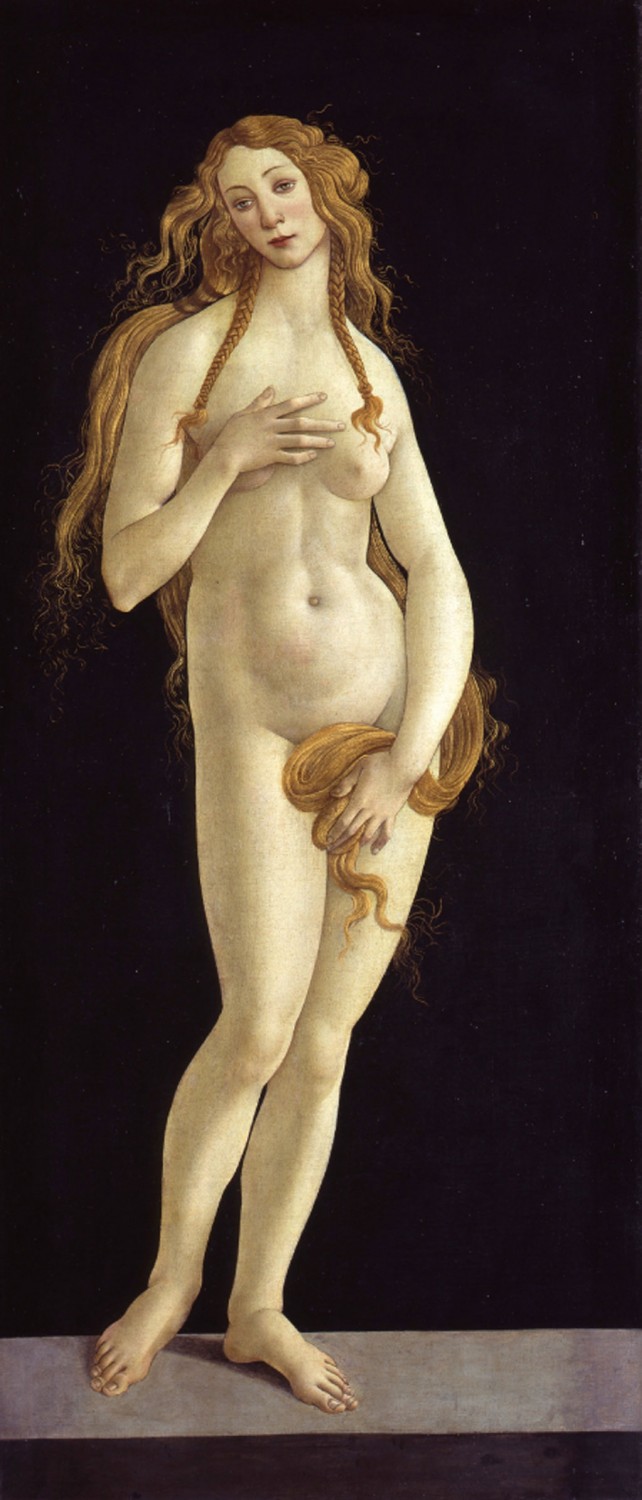
Sandro Botticelli (1445-1510) was born and lived in Florence, and prospered through the patronage of the Medici family, rulers of Venice for much of his life. His reputation today is largely founded on a small number of major paintings which reflect a dominant theory in art history; that the intellectual underpinning of Renaissance art is the embracing of Neoplatonism. This is reflected in a move away from religious subjects and portraits as the only acceptable subject matter for painting to embrace a more secular range of subjects, particularly subjects rooted in classical mythology. Botticelli’s seminal paintings, Primavera, The Birth of Venus (both in the Uffizi, Florence) or Venus and Mars (in the National Gallery) exemplify this subject matter. And whilst none of these works are in the exhibition, they hang over it as representing the dominant current view of Botticelli’s work.
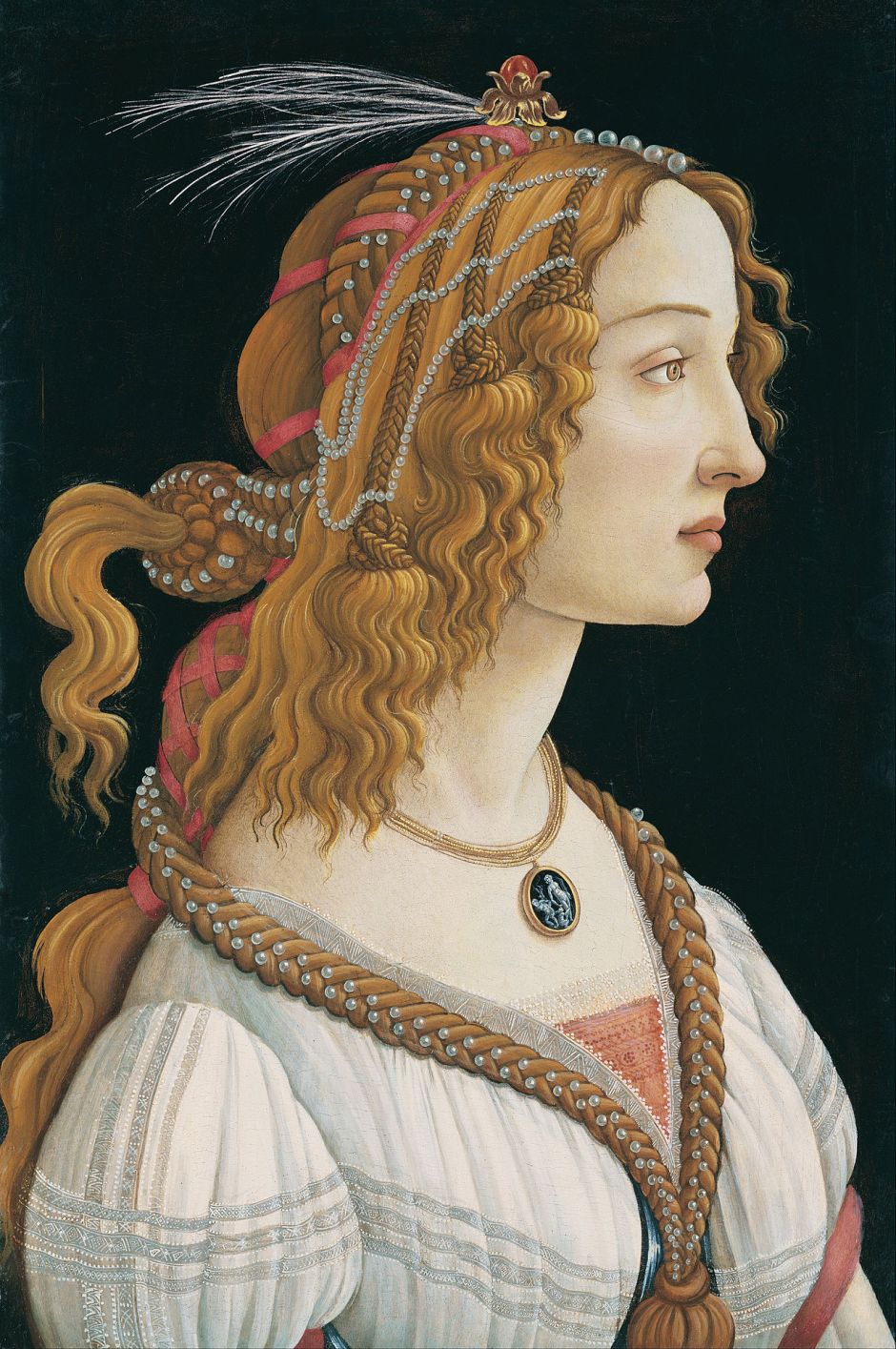
In practice though this was only part of Botticelli’s oeuvre. He painted portraits throughout his career, some of which, like Ideal Portrait of a Lady (Simonetta Vespucci), are amongst his best known and most influential works. He also painted a wide range of religious scenes throughout his career, and indeed painted exclusively religious subjects in the last years of his life. This was under the influence of the radical cleric Savonarola who led a brief and bloody revolt against the Medici’s, based on a ‘bonfire of the vanities’ the public during of books, paintings and other objects which rejected secularisation and profanity. Vasari, in his Lives of the Artists, states as fact that Botticelli fell under the influence of Savonarola and that this heavily influenced his work in the final years of his life. The religious paintings are in the exhibition are in fact a particular revelation as they have shouldered aside as part of the Botticelli legacy by the much better known secular works.
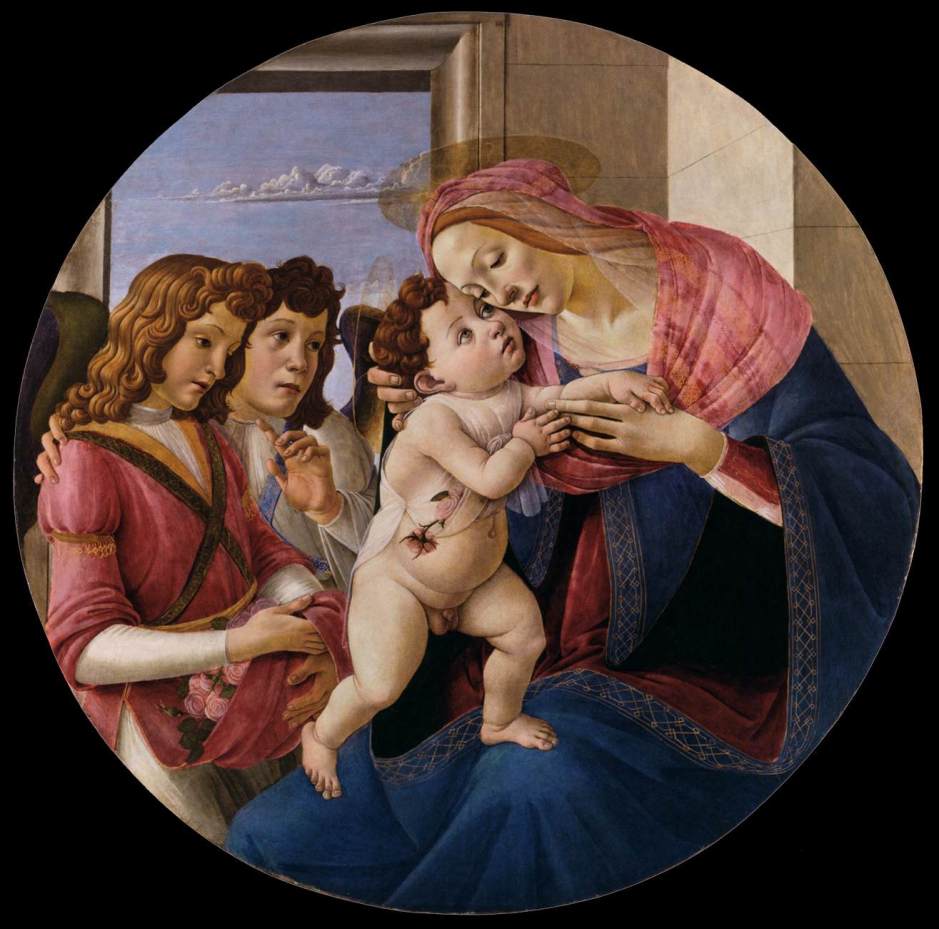

The works by Botticelli and his workshop form the third and final part of the exhibition. To reach it, we have to work backwards from today’s reimagining of the Botticelli images through his C19 re-discovery to the original works themselves. Given that Botticelli’s works are some of the most widely known and recognised works of the entire Renaissance period, it is remarkable that Botticelli largely disappeared from art history after his death and was largely unknown and unrecognised until he was re-discovered in the mid-C19, and taken up by a number of artist, particularly in Britain the pre-Raphaelite brotherhood, including Gabriel Dante Rossetti, William Morris and Edward Burne-Jones. The second part of the exhibition shows works by a variety of C19 artists paying homage to Botticelli.
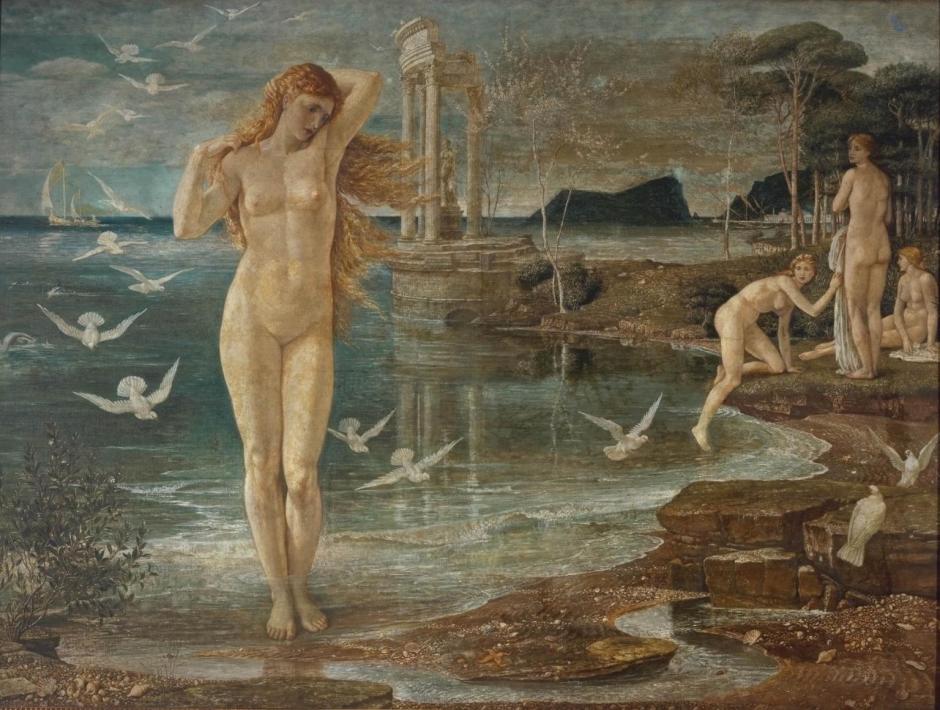
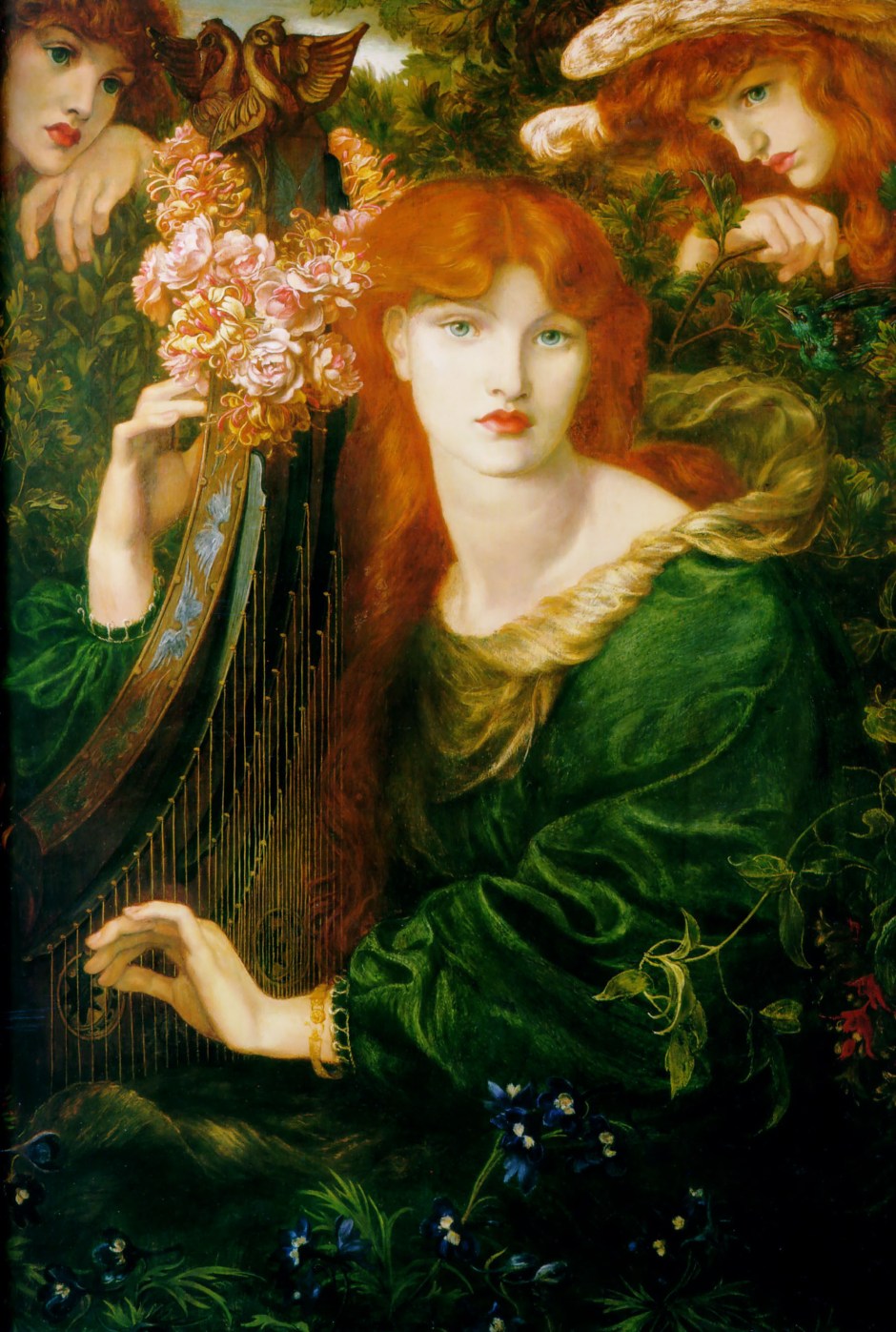
The process of re-discovering Botticelli is also a process of selection from amongst his work as to what is important; a selection that Botticelli himself might dispute. It is religious images which are particularly discarded, though we know Botticelli was a devout man, and what remains are his portraits and most particularly his images of Venus and the Three Graces. These images clearly supported the art historical theme of the central importance Neo-Platonism to the emergence of Renaissance art and they also accorded with a contemporary view of classical beauty, particularly as regard to the female nude. The slim lines, small breast and gentle curves of a Botticelli Venus were deemed much more aligned with a classical view of beauty than, say, the rounded, buxom nudes of Rubens or Rembrandt.

But we enter the exhibition not with the re-discovery of Botticelli in the C19 but with Botticelli as a contemporary brand, essentially defined as theBirth of Venus and Primavera; his entire oeuvre reduced to two images, sampled, borrowed, corrupted and extended by a range of contemporary artists from the makers of Dr No, through Andy Warhol, Elsa Schiaparelli to David LaChapelle. Some of these contemporary reworkings are worthwhile and beautiful in their own right. The Elsa Schiaparelli dresses based on Primavera, for example, or the rather beautiful Birth of Venus by Edward Baird. Other reworkings seem little more than a course attempt to shock. It requires a strong stomach to walk past photographs of the French ‘artist’ Orlan, a proponent ‘body art’, undergoing plastic surgery with a image of Botticelli’s Venus in the operating theatre to guide the surgeon.
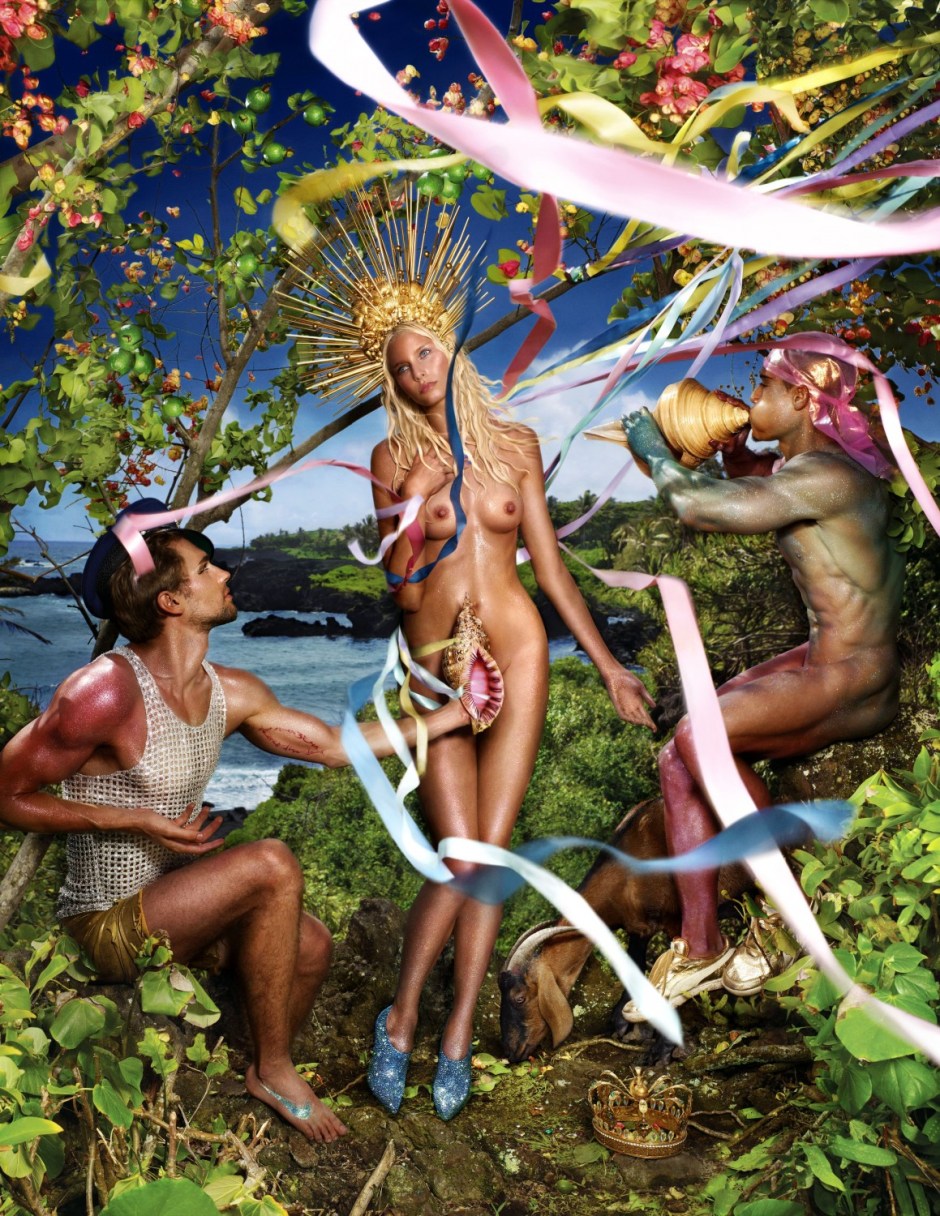
All in all, this is a fascinating and worthwhile exhibition. I had feared that it would be composed almost entirely of works after Botticelli, often of indifferent quality. Some of the works after Botticelli are indeed of indifferent quality, though others are substantial works of art in their own right. But what makes the entire exhibition worthwhile are the pictures by Botticelli and his workshop. The Birth of Venus and Primavera cannot leave the Uffizi, but enough work has been collected to make a stunning exhibition even without reimagining. This is an exhibition worth repeated visits.